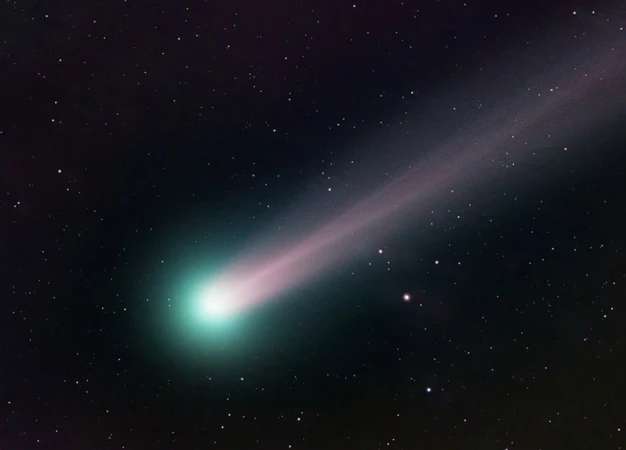Have you ever looked up at the night sky and wondered about those dazzling celestial objects called comets? These fascinating space bodies have intrigued scientists and captivated the imagination of humanity for centuries. In this comprehensive article, we will embark on an extraordinary journey, delving deep into the realm of comets and exploring their various types, unique characteristics, formation theories, and even famous comets that have left an indelible mark in history. Get ready to embark on an interstellar adventure as we unravel the mysteries of comets and their role in space exploration. So, gather your curiosity and prepare to be amazed!
Contents
- What is a Comet?
- Types of Comets
- Distinctive Features of Comets
- Comet Formation Theories
- Famous Comets in History
- Comets and Space Exploration
- Conclusion
-
Frequently Asked Questions
- 1. How are comets named?
- 2. How often do comets appear?
- 3. Can comets collide with Earth?
- 4. How do comets form their tails?
- 5. Can we land spacecraft on comets?
- 6. Can comets support life?
- 7. How long do comets typically last?
- 8. Can we predict when a comet will appear?
- 9. Do comets have any scientific significance?
- 10. Have any missions been sent to study comets?
- References
-
Frequently Asked Questions
- 1. What causes the bright glow around a comet?
- 2. How long do comets typically take to complete an orbit around the Sun?
- 3. Can comets collide with Earth?
- 4. How are comets different from asteroids?
- 5. Are comets visible from Earth with the naked eye?
- 6. Do comets only exist in our solar system?
- 7. Can comets bring life to other planets?
- 8. How do scientists study comets?
- 9. Are there any comets that have posed a threat to Earth?
- 10. Can comets be used as a source of water and other resources?
- References
- Read More
What is a Comet?
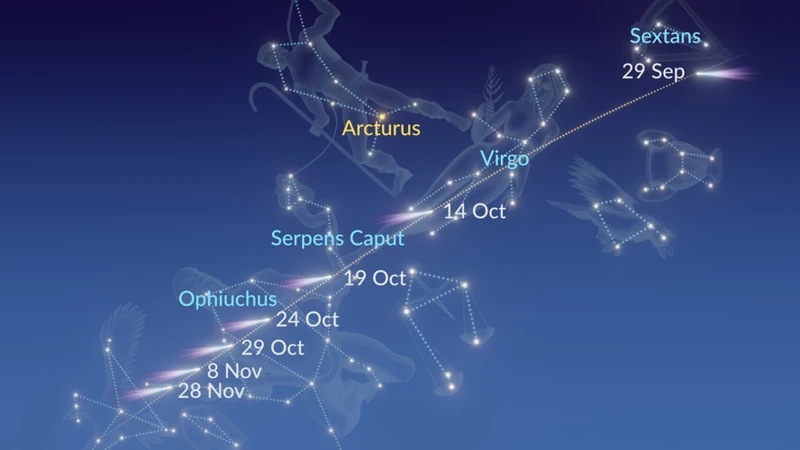
A comet is a celestial object consisting of a nucleus, coma, and tail. The nucleus, which is often referred to as the “heart” of the comet, is composed of dust, ice, rock, and various organic compounds. It can range in size from a few kilometers to tens of kilometers in diameter. Surrounding the nucleus is the coma, a hazy cloud of gas and dust that can span several thousand kilometers. This glowing envelope forms as the heat from the Sun vaporizes the icy nucleus, creating a cloud of gas and dust that reflects sunlight. The coma is what gives comets their characteristic fuzzy appearance.
Additionally, comets have a distinct tail that extends away from the Sun. This tail is composed of gas and dust particles that are swept away by the solar wind and radiation pressure. The tail can stretch for millions of kilometers and always points away from the Sun due to the force exerted on the particles by the solar wind.
Comets are often described as “dirty snowballs” or “icy dirtballs” due to their composition of volatile materials such as water, carbon dioxide, methane, and ammonia frozen in the form of ice. These materials are remnants from the early days of our solar system and hold valuable information about the conditions and processes that occurred during its formation. By studying comets, scientists gain insights into the origins and evolution of our planetary system.
Comets follow highly elliptical orbits around the Sun, which means their paths can take them far out into the outer reaches of the solar system before swinging back towards the Sun. When a comet approaches the Sun, the heat causes the nucleus to vaporize, and the released gas and dust create a stunning display in the night sky. The most spectacular comets can even be visible to the naked eye, captivating observers with their beauty and unpredictability.
Now that we have a basic understanding of what comets are, let’s dive into the different types of comets that exist in our solar system. But before we do that, let’s take a moment to appreciate the wonders of the cosmos and the many astronomical discoveries that have shaped our understanding of the universe.
Types of Comets
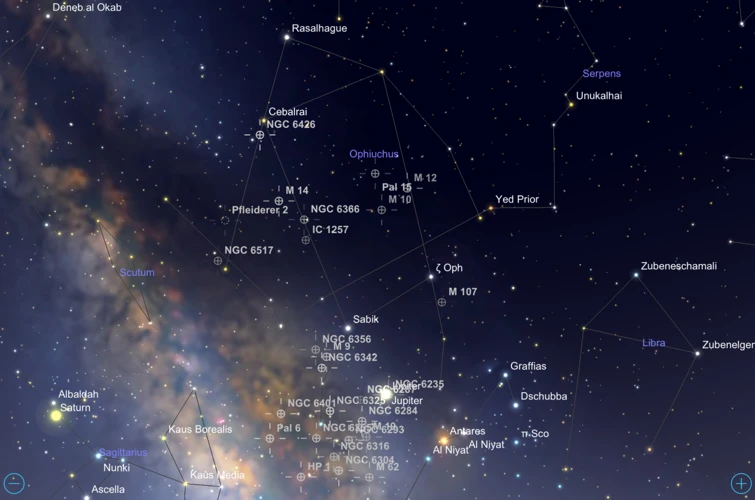
There are three main types of comets: short-period comets, long-period comets, and single-visit comets.
1. Short-Period Comets: These comets have orbits that take them around the Sun in relatively short periods, typically less than 200 years. They originate from the Kuiper Belt, a region beyond Neptune filled with icy remnants from the early solar system. Well-known short-period comets include Halley’s Comet and Encke’s Comet. While they are more predictable in terms of their appearance, they still provide valuable opportunities for scientific study.
2. Long-Period Comets: As their name suggests, long-period comets have orbits that take them on much longer journeys around the Sun, with periods exceeding 200 years. These comets originate from the Oort Cloud, a vast spherical shell of icy bodies that surrounds the entire solar system. Due to their more distant origins, long-period comets are less predictable and often make only one appearance before returning to the outer reaches of the solar system. One famous example of a long-period comet is Comet Hale-Bopp, which graced the night sky in 1997.
3. Single-Visit Comets: These comets have orbits that bring them into the inner solar system only once. Their origin is unknown, and they may have been captured from other star systems or the Oort Cloud. Single-visit comets can provide unique and unexpected displays. Comet Shoemaker-Levy 9, which collided with Jupiter in 1994, was a single-visit comet that captivated astronomers and opened up new avenues of research. Understanding the different types of comets allows us to appreciate the diversity and complexities of these intriguing celestial objects. As we continue our exploration, let’s take a moment to reflect on the history of the zodiac signs and how they have been influenced by astronomical discoveries.
1. Short-Period Comets
Short-period comets, as the name suggests, are comets with relatively shorter orbital periods around the Sun. These comets have an orbital period of less than 200 years. They are believed to originate from the Kuiper Belt, a region beyond Neptune’s orbit that is home to countless icy bodies. Short-period comets follow elliptical orbits that bring them closer to the Sun, resulting in more frequent appearances in our skies.
One of the most famous short-period comets is Halley’s Comet, which has a remarkably short period of around 76 years. This comet has been observed for centuries and is named after the astronomer Edmond Halley, who accurately predicted its return in 1758. Halley’s Comet is known for its spectacular appearances, and its last visit was in 1986. Interestingly, it is expected to return in 2061, giving future generations an opportunity to witness its splendor once again.
Short-period comets are considered to be “newcomers” in the solar system, as they have not been subjected to extensive heating from multiple close approaches to the Sun. This means that their composition and structure remain relatively intact, providing valuable insights into the early stages of our solar system’s formation. By studying short-period comets, scientists gain valuable information about the pristine materials present during the formation of planets and other celestial bodies.
It is also worth noting that short-period comets can have their orbits altered due to close encounters with giant planets like Jupiter. The gravitational pull of these planets can cause significant changes in a comet’s trajectory, either by sending it in a completely different direction or even ejecting it from the solar system altogether. This phenomenon highlights the intricate dynamics of celestial bodies and the interconnectedness of our solar system.
As we marvel at the beauty and scientific significance of short-period comets, we can’t help but wonder about the vastness of the universe and the countless discoveries that await us. If you’re interested in exploring more about the wonders of planetary alignments and astronomical discoveries, be sure to check out our article on planetary alignments and their significance in astronomy. The cosmos is full of fascinating mysteries that continue to shape our understanding of the universe we call home.
2. Long-Period Comets
Long-period comets, as the name suggests, have highly eccentric orbits that take them far out into the fringes of the solar system for extended periods of time. These comets have orbital periods ranging from 200 years to thousands of years, and sometimes even longer. They originate from the distant Oort Cloud, a hypothetical region on the outskirts of our solar system that is believed to contain trillions of icy bodies.
Unlike short-period comets that have relatively predictable orbits, long-period comets can have highly unpredictable paths, making it difficult to determine when they will make their next appearance. When they do venture closer to the Sun, they can produce spectacular displays as the Sun’s heat vaporizes the icy nucleus, creating a luminous coma and tail that illuminate the night sky.
One famous example of a long-period comet is Hale-Bopp, which captured the world’s attention in 1997. It had an enormously long orbital period of around 4,200 years. The brilliance of Hale-Bopp made it one of the most widely observed comets in history, visible to the naked eye for over a year.
The distant origins of long-period comets mean that their composition can be significantly different from that of the short-period comets. Long-period comets tend to have a higher concentration of volatile materials and are often referred to as “fresh comets” since they have not made frequent visits to the inner solar system. Studying these comets provides valuable insights into the primordial materials that formed our solar system billions of years ago.
Astrologically, long-period comets have been associated with significant events throughout history. Ancient civilizations often interpreted the appearance of long-period comets as omens or celestial signs believed to foretell significant events on Earth. The historical records are filled with accounts of comets being perceived as symbols of change, both positive and negative. To explore more about the historical significance of celestial events, you can delve into the fascinating history of zodiac signs.
As we continue our exploration of comets, let’s now turn our attention to another intriguing type – single-visit comets.
3. Single-Visit Comets
Single-visit comets, as the name suggests, are comets that make only one journey into the inner regions of our solar system before being expelled into interstellar space or destroyed. Unlike short-period and long-period comets that have predictable orbits, single-visit comets follow highly eccentric and chaotic paths. These comets originate from the Oort Cloud or the Kuiper Belt, two regions located far beyond the orbit of Neptune.
Due to their unpredictable nature, single-visit comets can provide both excitement and frustration for astronomers and skywatchers. While some of these comets can become exceptionally bright and put on a dazzling display as they approach the Sun, others may remain faint or go undetected. The appearance of a single-visit comet in our skies is a rare event, often leaving a lasting impression on those fortunate enough to witness it.
One well-known example of a single-visit comet is Comet Hale-Bopp, which captured the world’s attention in 1997. This remarkable comet was visible to the naked eye for a span of 18 months, making it one of the most widely observed comets in history. Its immense brightness and distinct blue-green coma made it a magnificent sight in the night sky.
The study of single-visit comets provides valuable insights into the composition, structure, and evolution of these ancient objects. By analyzing the composition of their nuclei and the gas and dust they release, scientists can gain a better understanding of the early solar system and its formation processes.
As we continue our exploration of comets, it is worth mentioning the influence of celestial bodies on our lives. Astrology, for instance, suggests that the positioning of planets and their retrograde motion can impact human behavior and events. Understanding the connection between celestial bodies and our daily lives has been a subject of fascination and interpretation for centuries. To delve deeper into this intriguing topic, consider exploring the concept of retrograde planets and their significance in astrology.
Now that we have explored single-visit comets and their enigmatic nature, let us move on to examining the distinctive features that make up these captivating celestial bodies. But before we do, let’s take a moment to appreciate the rich history and cultural significance associated with zodiac signs in various civilizations throughout time.
Distinctive Features of Comets
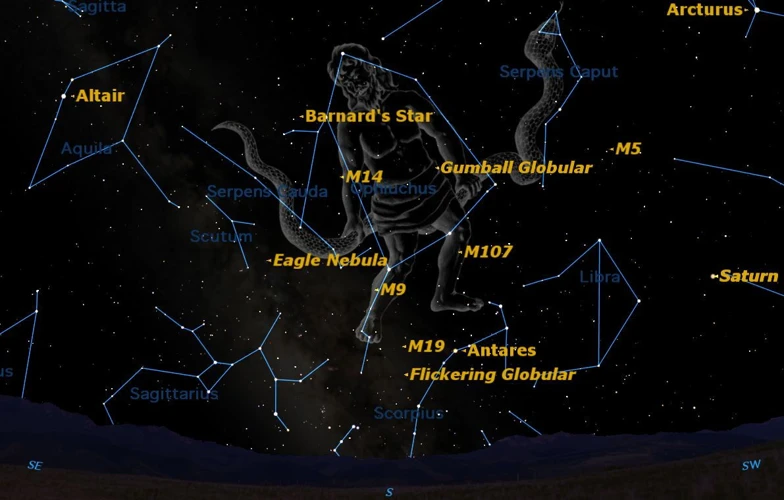
Comets possess several distinctive features that set them apart from other celestial objects. These features include:
1. Nucleus: The nucleus of a comet is the solid, central core made up of a mixture of ice, dust, and rocky materials. It is often small, ranging from a few kilometers to tens of kilometers in diameter. The nucleus is the source of a comet’s activity and serves as its “heart.”
2. Coma: Surrounding the nucleus is the coma, a glowing cloud of gas and dust. The coma forms when the heat from the Sun vaporizes the icy nucleus, releasing gas and dust particles. The coma can extend up to thousands of kilometers in size and gives the comet its distinct fuzzy appearance.
3. Tail: Comets are characterized by their stunning tails, which can stretch for millions of kilometers. The tail is composed of gas and dust particles that are blown away from the nucleus by the solar wind and radiation pressure. This tail always points away from the Sun due to the force exerted on the particles.
These distinctive features make comets fascinating objects to study, as they provide valuable insights into the early history of our solar system. By analyzing the composition and behavior of comets, scientists can uncover clues about the formation and evolution of planets, including our own. Now, let’s explore the various theories that explain how comets come into existence and shed light on their origins, including the intriguing concepts in astrology such as retrograde planets.
1. Nucleus
The nucleus is the central and most crucial part of a comet. It is a relatively solid structure, typically consisting of a mixture of dust, rock, ice, and various organic compounds. Cometary nuclei come in a wide range of sizes, with diameters varying from a few kilometers to tens of kilometers. These nuclei are often irregularly shaped, resembling a lumpy potato rather than a perfectly spherical object.
The nucleus of a comet is primarily composed of water ice, which makes up the majority of its mass. However, it also contains other volatile substances such as carbon dioxide, methane, and ammonia, which are frozen solid in the extreme cold temperatures of the outer solar system. These frozen volatile compounds are remnants from the early stages of the solar system’s formation and provide valuable clues about its history.
As a comet approaches the Sun on its elliptical orbit, the heat and radiation cause the nucleus to undergo a process called sublimation. Sublimation is when a substance transitions directly from a solid to a gas state without passing through the liquid phase. This process causes the icy nucleus to vaporize, releasing gas and creating a coma around the nucleus.
One of the remarkable characteristics of cometary nuclei is their ability to preserve ancient material. The icy particles within the nucleus contain elements and compounds that date back to the formation of our solar system over 4.6 billion years ago. Scientists study these preserved materials to gain insights into the early conditions and processes that occurred during the birth of our planetary system.
The study of cometary nuclei has helped astronomers understand the origins of water on Earth. It is believed that a significant amount of Earth’s water may have come from comets, as the icy nuclei contain vast quantities of water ice. By analyzing the composition and isotopic ratios of the water within cometary nuclei, scientists can evaluate whether comets played a role in delivering water to our planet.
In Astrology, the retrograde motion of planets plays a crucial role in understanding celestial events and interpreting individual birth charts. However, it is important to note that comets, although fascinating and significant in their own right, do not have a direct influence on astrology or retrograde planets. The study of comets and their nuclei provides valuable insights into the formation of our solar system and the history of our universe. Let’s now delve into another distinctive feature of comets – the coma.
2. Coma
The coma of a comet is a fascinating and visually striking part of its structure. It is a cloud-like envelope that surrounds the nucleus, extending for thousands of kilometers into space. Comas are formed when the heat from the Sun vaporizes the icy nucleus of the comet, releasing gases and dust into space. This process is known as sublimation.
The coma is composed of various gases, including water vapor, carbon dioxide, and methane. As these gases are released, they mix with the dust particles present in the nucleus, creating a bright and hazy cloud around the comet. The gases within the coma are ionized by the Sun’s ultraviolet radiation, causing them to glow and emit light. This gives the coma a beautiful and ethereal appearance, often with a bluish or greenish tint.
The size and shape of the coma can vary widely, depending on factors such as the size and composition of the nucleus, the comet’s distance from the Sun, and the amount of gas and dust being released. Some comas can be small and compact, while others can be large and diffuse, spreading out to cover a significant portion of the sky.
Observing the coma of a comet can provide valuable insights into its composition and activity. Scientists use spectroscopy to analyze the light emitted by the coma, allowing them to determine the types of gases present and their concentrations. This data helps in understanding the chemical processes occurring within the comet and contributes to our knowledge of the early solar system.
Comas also play a significant role in the formation of a comet’s tail. As the Sun’s radiation pushes against the gases and dust in the coma, it creates a force called solar wind. This force pushes the material away from the Sun, forming the iconic tail that often stretches for millions of kilometers. The tail always points away from the Sun due to the pressure exerted by the solar wind.
The coma of a comet is a mesmerizing feature that results from the vaporization of the icy nucleus. It is a cloud-like envelope composed of gases and dust, which glows and emits light as it interacts with the Sun’s radiation. The coma provides valuable information about the composition and activity of the comet, and its formation contributes to the creation of the comet’s tail. Astrology enthusiasts might find interest in studying comets and their comas along with the celestial phenomena associated with retrograde planets.
3. Tail
The tail of a comet is one of its most captivating and visually striking features. It is a long, glowing stream of gas and dust that extends away from the nucleus in a direction opposite to the Sun. Cometary tails can reach remarkable lengths, stretching millions of kilometers into space. There are two main types of tails: ion tails and dust tails.
1. Ion Tail: The ion tail is composed of ionized gases that fluoresce due to interactions with the Sun’s ultraviolet radiation. This tail appears blue in color and is made up of charged particles. As the comet approaches the Sun, the solar radiation heats up the nucleus, causing volatile materials to vaporize. The energized particles are then ionized, forming a tail that is directly influenced by the Sun’s magnetic field. The ion tail always points directly away from the Sun due to the pressure exerted by the solar wind. In some cases, the ion tail can have a wavy or twisted appearance, influenced by the dynamic interactions in the comet’s environment.
2. Dust Tail: The dust tail is made up of larger solid particles, such as dust and debris, that are released from the nucleus as the comet heats up. Unlike the ion tail, the dust tail does not fluoresce and appears yellow or white in color. The dust particles are pushed away from the Sun by the pressure of sunlight and radiation pressure. This creates a curved tail that follows the comet’s orbit around the Sun. The dust tail tends to lag behind the ion tail and has a more diffuse appearance.
It is important to note that the tail of a comet is not a permanent feature. As the comet moves farther away from the Sun, the production of gas and dust decreases, causing the tail to fade away. However, comets can leave behind particles and debris in their orbits, which can lead to the formation of meteor showers when the Earth passes through these remnants.
The intricate and dynamic nature of a comet’s tail has captured the fascination of astronomers, artists, and stargazers throughout history. Its ethereal beauty and ever-changing form serve as a reminder of the vastness and complexity of the cosmos. To learn more about the celestial wonders and their impact on our lives, take a moment to explore the intriguing world of retrograde planets in astrology.
Comet Formation Theories
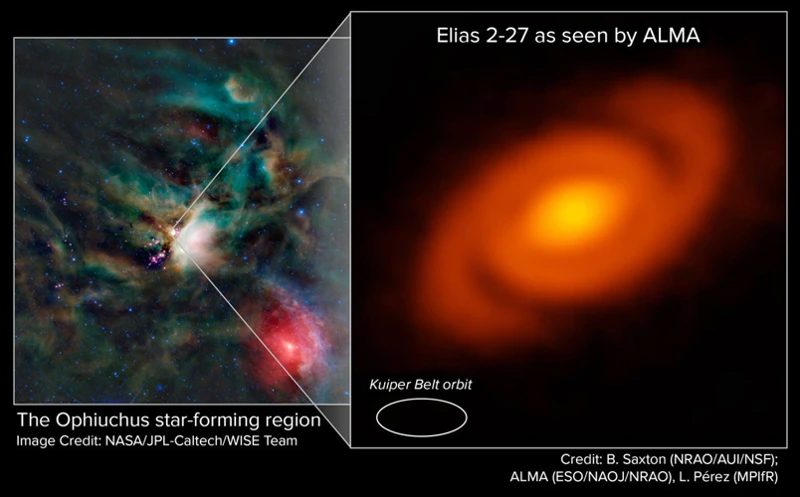
Scientists have put forth several theories to explain the formation of comets, each providing a unique perspective on their origin. Nebular Hypothesis, one of the most widely accepted theories, suggests that comets were formed alongside the planets and other celestial bodies in our solar system. According to this theory, comets originated from the same swirling cloud of gas and dust known as the solar nebula that gave birth to our Sun and planets. As the solar nebula collapsed, material within it began to clump together, forming planetesimals. Some of these planetesimals were composed of rocky and icy material, and these icy planetesimals eventually became the building blocks of comets. Another hypothesis known as Capture Theory proposes that comets are actually objects from outside our solar system that were captured by the gravitational pull of the Sun or a planet. This suggests that not all comets originated within our solar system, but rather ventured into our neighborhood from distant regions of space. Lastly, the Stellar Collision Theory posits that comets are the result of collisions between stars or other celestial bodies. These violent collisions can disrupt the icy outer layers of the objects involved, creating a cloud of icy debris that eventually forms comets. While each theory offers a unique perspective, the exact formation process of comets is still a topic of ongoing research and exploration.
1. Nebular Hypothesis
The Nebular Hypothesis is a theory that explains the formation of comets within the context of the larger Nebular Theory, which describes the formation of the entire solar system. According to this hypothesis, comets are believed to have originated from the primordial solar nebula, a massive cloud of gas and dust that existed before the formation of the Sun and planets.
The Nebular Hypothesis proposes that as the solar nebula collapsed under its own gravity, it began to spin and flatten into a disk shape known as the protoplanetary disk. Within this disk, regions of higher density and concentration of materials formed, eventually becoming the building blocks of planets, moons, asteroids, and comets.
In the case of comets, it is believed that they formed in the outer regions of the protoplanetary disk, where temperatures were cold enough for volatile substances like water, methane, and ammonia to condense and freeze. These volatile ices became the nuclei of comets, collecting dust and other particles as they grew in size.
As the protoplanetary disk evolved and the Sun began to emit intense heat and solar wind, comets were gravitationally influenced by the giant planets in the outer solar system, such as Jupiter and Saturn. These planets would sometimes perturb the orbits of comets, causing them to be flung into the inner solar system, where they became visible as they approached the Sun.
The Nebular Hypothesis provides a logical and plausible explanation for the formation and migration of comets. However, it is important to note that this theory is not without its challenges and complexities. The dynamics of the early solar system were likely more chaotic and dynamic than initially thought, and other factors, such as stellar encounters and gravitational interactions, may have also played a role in the formation and evolution of comets.
Understanding the formation of comets through the Nebular Hypothesis allows us to appreciate the intricate processes that shaped our solar system. Now, let’s move on to explore another intriguing theory, the concept of retrograde planets in astrology.
2. Capture Theory
The Capture Theory is one of the proposed explanations for how comets are formed. According to this theory, comets are not formed in the outer regions of the solar system, but rather they are objects that originated elsewhere, possibly in other star systems, and were later captured by the gravitational pull of our Sun.
This theory suggests that comets are formed in the colder, outer regions of the galaxy where temperatures are low enough for volatile materials like water, carbon dioxide, and methane to freeze. These objects, known as planetesimals, are thought to be left over from the early stages of star formation.
As a planetesimal passes by our Sun, it may get caught in its gravitational pull. The Sun’s gravity gradually bends the trajectory of the planetesimal until it becomes trapped in an elliptical orbit around the Sun. This captured object then becomes a comet.
The captured comets retain their original composition, which includes icy and rocky materials. As the comet approaches the Sun, the heat causes the ices to vaporize, creating the characteristic coma and tail that we observe. This process is often accompanied by the release of gas and dust, which contributes to the comet’s glowing appearance.
The Capture Theory helps explain the existence of long-period comets, which have highly elongated orbits that take them far into the outer regions of the solar system. These comets are thought to have originated from the Oort Cloud, a spherical region of icy bodies that surrounds the Sun at a great distance.
While the Capture Theory provides a plausible explanation for the formation of comets, there is ongoing research and debate in the scientific community about the exact mechanisms and processes involved. Scientists continue to study comets and gather data through space missions and telescopic observations, deepening our understanding of these captivating celestial objects.
For more information on celestial phenomena and the intricate movements of celestial bodies, you may want to explore the concept of retrograde planets in astrology, which has a long and intriguing history.
3. Stellar Collision Theory
According to the Stellar Collision Theory, comets may be formed through the collision of two stars in binary star systems. This theory suggests that when two stars collide, the intense heat and pressure generated in the collision process can lead to the formation of a comet.
In a binary star system, two stars orbit each other due to their gravitational interaction. Over millions of years, the stars gradually move closer together, eventually resulting in a cataclysmic collision. During this collision, massive amounts of energy are released, causing the stars to merge into a single, more massive star. The collision also generates a significant amount of debris, including dust and volatile substances.
As the debris settles, it can coalesce to form a rotating disk around the newly-formed star. Within this disk, small icy bodies, akin to the building blocks of comets, begin to form. Over time, these bodies grow larger through accretion, attracting more and more material until they become the nuclei of comets.
The Stellar Collision Theory proposes that these newly formed comets are then released into interstellar space, where they can follow highly elliptical orbits and potentially be influenced by the gravitational pull of other celestial bodies. This theory provides a possible explanation for some of the unique characteristics observed in comets, such as their diverse compositions and orbital paths.
While the formation of comets through stellar collisions is an intriguing concept, it is important to note that this theory is still being studied and researched. The precise mechanisms involved in the formation process and the frequency of such stellar collisions in the universe are topics of ongoing scientific investigation. As our understanding of the cosmos deepens, scientists continue to explore the diverse origins of comets and unravel the mysteries of our vast and awe-inspiring universe.
To learn more about the fascinating movements of celestial bodies, check out our article on the influence of retrograde planets in astrology, which explores the significance of planetary movements in astrological interpretations.
Famous Comets in History
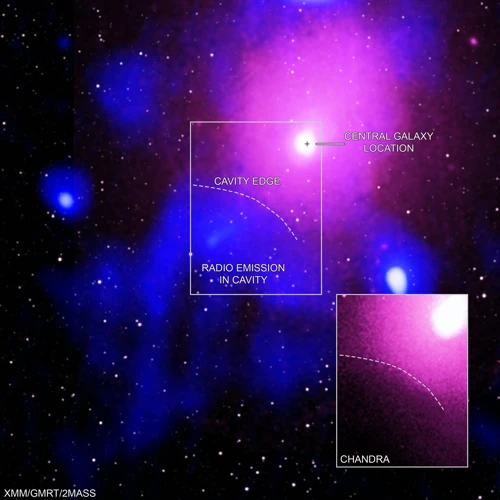
Throughout history, several comets have captured the attention of astronomers and ignited the curiosity of humanity. One of the most famous comets, known as Halley’s Comet, has been observed and documented for centuries. Named after the English astronomer Edmond Halley, who predicted its return, this periodic comet graces our skies roughly once every 76 years. Its last appearance was in 1986, and it is expected to return in 2061, providing a mesmerizing celestial show for future generations. Another remarkable comet that made headlines is the Hale-Bopp Comet, which became visible to the naked eye in 1997. This comet held the attention of people worldwide with its brilliant and long-lasting display. Lastly, we have the awe-inspiring Comet Shoemaker-Levy 9, which gained notoriety for its impact with Jupiter in 1994. This event marked the first observed collision between two celestial bodies in our solar system. With their incredible journeys and profound impact on our understanding of the universe, these famous comets have left an enduring mark in the annals of history. To learn more about the mystical connections between celestial bodies and our daily lives, explore the fascinating world of astrology and the significance of retrograde planets.
1. Halley’s Comet
Halley’s Comet is one of the most famous and well-known comets in history. Named after the English astronomer Edmond Halley, who accurately predicted its return, this periodic comet has been observed for centuries. Halley’s Comet is classified as a short-period comet, with an orbital period of approximately 76 years. Its most recent appearance was in 1986, and it is expected to be visible again in 2061.
What sets Halley’s Comet apart is its large size and the significant amount of debris it leaves behind in its wake. The nucleus of Halley’s Comet is estimated to be about 15 kilometers in diameter, making it one of the largest known comets. It is composed of a mixture of rock, dust, ice, and organic compounds.
When Halley’s Comet approaches the Sun, its icy nucleus vaporizes, creating a coma that can reach sizes of tens of thousands of kilometers. This coma is accompanied by two distinct tails: a dust tail and a gas ion tail. The dust tail consists of tiny dust particles reflecting sunlight, while the gas tail is made up of ionized gas molecules that are affected by the solar wind.
Halley’s Comet has been observed and documented throughout history. It is mentioned in ancient texts and depicted in numerous works of art. Its regular return has allowed scientists to study its properties and gather valuable data about comets in general. The 1986 apparition of Halley’s Comet provided an excellent opportunity for space exploration, with multiple spacecraft being sent to study and photograph the comet up close.
The enduring fame of Halley’s Comet is also attributed to its appearances coinciding with significant events in human history. For example, its 1066 apparition was witnessed during the Norman Conquest of England, while its 1910 appearance occurred shortly before the outbreak of World War I.
Halley’s Comet remains a source of awe and fascination, capturing our imagination and reminding us of the vastness and beauty of the universe. Its predictable return allows us to anticipate future sightings and plan further scientific exploration. To learn more about the movement and influence of celestial bodies, you can also explore the concept of retrograde planets in astrology, which deals with the apparent backward motion of planets from our perspective on Earth.
2. Hale-Bopp Comet
The Hale-Bopp Comet, also known as Comet Hale-Bopp, is one of the most famous comets in history and one that left a lasting impact on astronomers and enthusiasts alike. It was discovered independently by Alan Hale and Thomas Bopp in July 1995, which is why it bears their names.
What made the Hale-Bopp Comet particularly notable was its incredible brightness and long duration of visibility. It became visible to the naked eye in May 1996, nearly a year after its discovery, and remained visible for an extended period of about 18 months. This made it one of the brightest comets of the 20th century. Its spectacular display fascinated observers around the world and sparked a surge of public interest in astronomy.
The Hale-Bopp Comet had a distinctive bluish-green coma, which was attributed to the presence of diatomic carbon in its nucleus. With a nucleus estimated to be about 40 kilometers in diameter, it was one of the largest comets ever observed. The coma surrounding the nucleus extended for millions of kilometers, and its tail, consisting of gas and dust particles, stretched for hundreds of thousands of kilometers.
This comet’s long visibility and notable brightness allowed astronomers to gather an abundance of data and observations. They were able to study its composition, structure, and behavior in great detail, providing valuable insights into the nature of comets. The Hale-Bopp Comet revealed crucial information about the volatile materials present in cometary nuclei and helped scientists better understand the processes that occur when comets interact with the Sun.
The exceptional visibility of the Hale-Bopp Comet also made it a favorite subject for astrophotography. Many photographers and amateur astronomers captured stunning images of its magnificent tail and coma, contributing to the widespread fascination surrounding this celestial event.
It’s worth mentioning that the Hale-Bopp Comet’s appearance coincided with the rise of the internet, allowing for instant communication and widespread sharing of information. This led to an unprecedented level of public engagement and awareness of the comet’s progress.
The Hale-Bopp Comet had a profound impact on popular culture, inspiring countless works of art, literature, and even references in films and television shows. Its grandeur and long-lasting visibility solidified its place in history as one of the most remarkable comets ever observed.
Now that we’ve explored the features and significance of the Hale-Bopp Comet, let’s continue our journey by examining another renowned celestial visitor, Comet Shoemaker-Levy 9. But before we do that, let’s take a moment to delve into the intriguing world of retrograde planets and their significance in astrology.
3. Comet Shoemaker-Levy 9
Comet Shoemaker-Levy 9, also known as SL9, is a remarkable comet that gained worldwide attention in 1994 when it collided with the planet Jupiter. Discovered by astronomers Carolyn and Eugene M. Shoemaker and David Levy in March 1993, this comet had a fascinating journey that ultimately led to its dramatic encounter with the gas giant.
What makes Comet Shoemaker-Levy 9 truly unique is that it was the first comet to be observed orbiting a planet rather than the Sun. Its orbit was captured by Jupiter’s immense gravitational pull, causing it to enter a series of orbits around the planet. These repeated close approaches to Jupiter led to the gradual breakup of the comet, resulting in a chain of distinct fragments.
In July 1994, the fragments of Comet Shoemaker-Levy 9 collided with Jupiter, creating a series of massive fireballs and releasing an astonishing amount of energy. These impacts were so powerful that they left dark scars on Jupiter’s atmosphere, which were visible through powerful telescopes on Earth.
The collision of Comet Shoemaker-Levy 9 with Jupiter provided astronomers with a unique opportunity to study the dynamics of such an event. Scientists were able to observe the impact sites and analyze the data gathered to better understand the composition and structure of both the comet and Jupiter’s atmosphere.
This historic event captured the public’s imagination and highlighted the potential dangers of celestial objects crossing paths with planets. It also emphasized the importance of ongoing monitoring and research to protect Earth from potential impacts.
The remarkable story of Comet Shoemaker-Levy 9 serves as a constant reminder of the dynamic nature of our solar system and the countless wonders waiting to be discovered in the cosmos. To learn more about other fascinating astronomical phenomena, such as retrograde planets in astrology, be sure to check out our article on the significance of retrograde planets in astrology.
Comets and Space Exploration
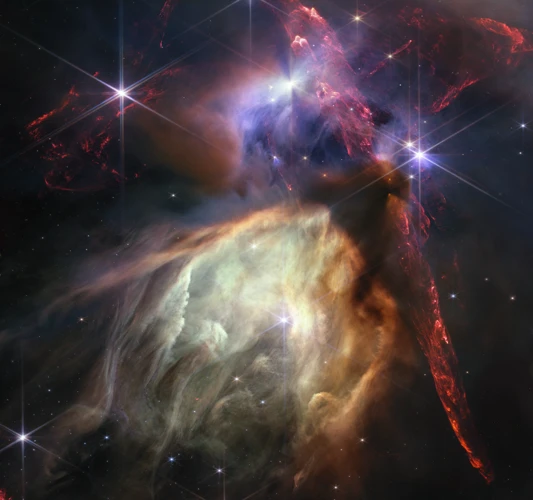
Comets have not only ignited our curiosity but also played a significant role in space exploration. Scientists and astronomers have embarked on numerous missions to study and gain a deeper understanding of these enigmatic celestial objects. One notable mission is the European Space Agency’s Rosetta mission, which made history by being the first spacecraft to rendezvous with a comet, specifically Comet 67P/Churyumov-Gerasimenko. This groundbreaking mission provided invaluable data and insights into the composition and structure of comets.
Rosetta’s lander, Philae, successfully touched down on the comet’s surface, capturing incredible close-up images and analyzing the comet’s physical properties. The data collected from the mission shed light on the comet’s origins and evolution, providing valuable clues about the early solar system’s formation. This mission allowed scientists to study the comet’s nucleus, coma, and tail up close, unraveling the secrets hidden within these fascinating celestial bodies.
Another notable mission that involved the study of comets is NASA’s Stardust mission. The spacecraft flew past Comet Wild 2, collecting samples of the coma and dust particles ejected from the comet. Stardust successfully returned to Earth, delivering precious comet particles that provided scientists with unprecedented insights into the chemical and physical composition of comets.
Comets also hold potential significance in terms of resources for future space exploration. They contain valuable resources such as water ice, which can be used for drinking water, fuel, and the production of breathable oxygen. NASA’s Deep Impact mission, for instance, aimed to study the internal composition of a comet by slamming a kinetic impactor into its nucleus. This mission provided valuable data about the structure and composition of comets, contributing to our understanding of their potential as resources for future space missions.
In addition to these missions, ground-based telescopes and observatories continue to study comets, providing a wealth of information through observations and detailed analysis. With advancements in technology, future missions are being planned to further explore and unlock the mysteries of these captivating cosmic wanderers.
As our understanding of comets grows, so does our appreciation for the important role they play in the formation of the solar system and the potential insights they may hold for the origins of life on Earth. Comets continue to inspire scientists and space enthusiasts alike, fueling the desire to explore and unravel the secrets of the universe.
Conclusion

In conclusion, exploring the different types of comets allows us to appreciate the diverse and captivating nature of these celestial objects. From short-period comets that make regular visits to our inner solar system, to long-period comets that journey from the far reaches of the Oort Cloud, each type offers unique insights into the formation and evolution of our solar system.
We have also delved into the distinctive features of comets, including their nucleus, coma, and tail. These elements contribute to the awe-inspiring beauty exhibited by comets when they approach the Sun and become visible from Earth. By studying these characteristics, scientists can gather valuable information about the composition of comets and the conditions in the early solar system.
Additionally, we explored some of the theories surrounding comet formation, including the nebular hypothesis, capture theory, and stellar collision theory. These theories provide potential explanations for how comets originated and became a part of our solar system’s fascinating history.
Furthermore, we encountered some of the most famous comets in history, such as Halley’s Comet, Hale-Bopp Comet, and Comet Shoemaker-Levy 9. These comets have not only captured the attention of scientists but have also captivated the general public with their stunning appearances and remarkable contributions to astronomical knowledge.
Lastly, we discussed how comets play a significant role in space exploration. They have served as targets for scientific missions, providing invaluable data that enhances our understanding of comets and their connection to the broader astronomical landscape.
As we conclude our exploration of comets, it is clear that these enigmatic bodies continue to mesmerize and inspire us with their beauty and scientific significance. They remind us of the infinite wonders of the universe and the ongoing quest to unravel its mysteries. So, the next time you look up at the night sky and spot a comet streaking across, take a moment to appreciate the celestial spectacle and the countless new discoveries that await us in the vastness of space.
Frequently Asked Questions

1. How are comets named?
Comets are typically named after the people or groups who discovered them. For example, Halley’s Comet is named after the astronomer Edmund Halley.
2. How often do comets appear?
The frequency of comet appearances can vary. Some short-period comets, like Halley’s Comet, can be observed from Earth every 75-76 years, while others may take hundreds or even thousands of years to return.
3. Can comets collide with Earth?
While it is rare, comets can potentially collide with Earth. However, the probability of such an event occurring is extremely low due to the vast distances between comets and our planet. Scientists closely monitor comets to assess any potential risks.
4. How do comets form their tails?
As a comet approaches the Sun, the heat causes the icy nucleus to vaporize, releasing gas and dust particles. The solar wind and radiation pressure then push these particles away from the comet, creating its iconic tail.
5. Can we land spacecraft on comets?
Yes, landing spacecraft on comets is possible. In 2014, the European Space Agency successfully landed its Rosetta spacecraft on Comet 67P/Churyumov-Gerasimenko, providing valuable data and insights into the composition and structure of comets.
6. Can comets support life?
While it is unlikely that comets themselves can support life, they contain organic molecules that are essential building blocks for life as we know it. Some scientists believe that comets may have delivered these essential molecules to Earth, potentially contributing to the origin of life on our planet.
7. How long do comets typically last?
The lifespan of a comet can vary depending on its size and composition. Some comets may disintegrate or break apart after a few passes around the Sun, while others can endure for thousands or even millions of years.
8. Can we predict when a comet will appear?
Scientists can predict the orbit and approximate timing of comet appearances based on their observations and mathematical models. However, accurately predicting the behavior and characteristics of comets can still pose challenges due to various factors that can affect their trajectories.
9. Do comets have any scientific significance?
Comets play a crucial role in understanding the formation of our solar system and the processes that occurred during its early stages. By studying comets, scientists gain valuable insights into the origin of Earth, the distribution of water and organic materials, and the overall evolution of our planetary system.
10. Have any missions been sent to study comets?
Yes, several space missions have been launched to study comets up close. Some notable missions include the Rosetta mission by the European Space Agency, the Stardust mission by NASA, and the Deep Impact mission that intentionally collided a spacecraft with Comet Tempel 1 to study its composition.
References
Frequently Asked Questions

1. What causes the bright glow around a comet?
The bright glow around a comet, known as the coma, is caused by the Sun’s heat vaporizing the comet’s nucleus. This creates a cloud of gas and dust that reflects sunlight, resulting in a beautiful glowing halo.
2. How long do comets typically take to complete an orbit around the Sun?
The time it takes for a comet to complete an orbit around the Sun varies depending on its type. Short-period comets, like Halley’s Comet, have orbits that range from 3 to 200 years, while long-period comets can take thousands or even millions of years to complete one orbit.
3. Can comets collide with Earth?
While rare, comets can potentially collide with Earth. However, their small size and the vastness of space make the chances of a direct impact very slim. Scientists closely monitor comets to determine their paths and assess any potential risks.
4. How are comets different from asteroids?
Comets and asteroids are both celestial bodies, but they have distinct characteristics. Comets are made up of ice, dust, and organic compounds, while asteroids are primarily composed of rock and metal. Additionally, comets often have a tail when they approach the Sun, while asteroids do not.
5. Are comets visible from Earth with the naked eye?
Yes, some comets are visible from Earth with the naked eye. Comets that come closer to the Sun and have larger nuclei are more likely to be visible. Famous comets like Halley’s Comet and Hale-Bopp Comet have been visible to the naked eye during their close approaches to Earth.
6. Do comets only exist in our solar system?
No, comets are not limited to our solar system. Comets have been observed in other star systems as well. These interstellar comets travel through space, often on hyperbolic trajectories, and provide us with valuable insights into the composition and characteristics of celestial bodies beyond our own system.
7. Can comets bring life to other planets?
While the possibility of comets bringing life to other planets is still under scientific debate, it is believed that comets contain organic compounds and water, which are essential for the formation of life. It is plausible that comets may have played a role in seeding the building blocks of life on other planets or moons.
8. How do scientists study comets?
Scientists study comets using various methods. Space probes, such as NASA’s Stardust and ESA’s Rosetta missions, have been sent to rendezvous with comets, collect samples, and study their composition up close. Ground-based observations, telescopes, and spectroscopy techniques also aid in gathering valuable data about comets.
9. Are there any comets that have posed a threat to Earth?
While comets have come close to Earth, there is currently no known case of a comet posing a direct threat to our planet. Scientists and space agencies closely monitor and track the paths of known comets to assess any potential risks and take appropriate measures if necessary.
10. Can comets be used as a source of water and other resources?
Yes, comets can potentially serve as a valuable source of water and other resources in space exploration. Water extracted from comets can be used for drinking, growing plants, and even for fueling spacecraft. Harvesting resources from comets may be crucial for future long-duration space missions and establishing colonies on other celestial bodies.

